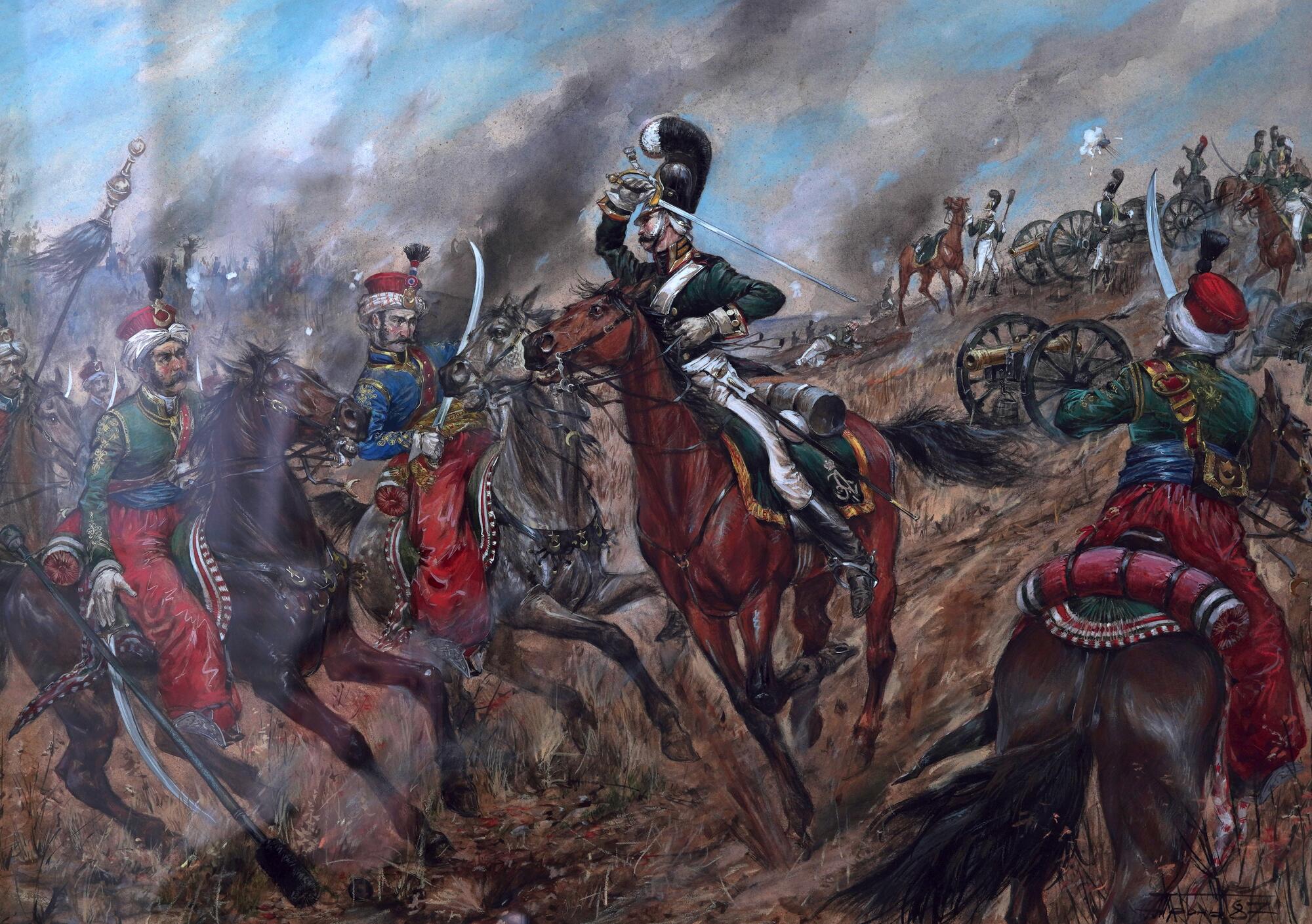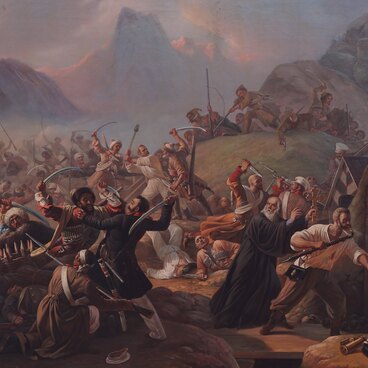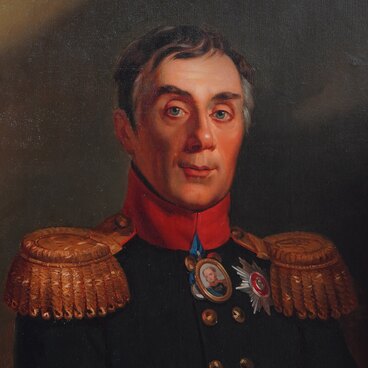The Battle of Austerlitz (present-day Slavkov u Brna, Czech Republic) on November 20, 1805 was one of the most infamous battles of the Russian army, the first lost pitched battle since Peter the Great. However, the defeat was not absolute: the Russian troops managed to retreat in an organized manner, despite the shelling, while the victorious French were not in the most advantageous position. Pyotr Mikhailovich Volkonsky, for example, claimed that “the Battle of Austerlitz was not lost.” In addition, the mistakes of the command did not outshine the heroism of the Russian troops.
The Life Guards Horse Artillery Company under the command of Colonel Vasily Grigoryevich Kostenetsky took part in the battle. In memoirs of his contemporaries, we read that he was a competent and brave military man, who was also distinguished by his enormous height and physical strength. He recruited gunners to match himself, no shorter than two arshins and six vershoks (170 cm). The tallest and most powerful of them was Fedot Maslov, who held the rank of a feuerwerker (a non-commissioned artillery officer).
During the battle, six company guns were captured by a Guards squadron of Mamluks (slave-soldiers and freed slaves); two managed to be recaptured immediately, the rest remained with the enemy. Kostenetsky and Maslov rushed into the midst of the enemy. They were armed with broadswords and sponges — wooden rods for cleaning artillery guns from soot. The Mamluks, who did not expect such an onslaught, fled, abandoning their trophies. Two guns had to be abandoned (one soldier from its operating crew was wounded), the other two were returned to the company.
In 1806, Vasily Kostenetsky was awarded the Order of St. George, 4th class for saving the weapons and demonstrated courage, “In reward for the excellent courage and bravery shown in the battle of November 20 at Austerlitz against the French.” In 1807, Fedot Maslov became the first of the Guards artillerymen to receive the newly established St. George Cross.
The presented drawing reproduces the fight between feuerwerker Maslov and the Mamluks. To focus attention on the hero, the artist depicted him noticeably above the enemies. In reality, the Mamluk units were also made up of tall, strong soldiers from the peoples of the Caucasus, Arabs and Egyptians.
The “squadron of Mamluks under the First Consul” of 160 people was formed in October 1801. In 1802, it was renamed as the Guards squadron, and in 1804 it became part of the Guards Mounted Chasseurs Regiment. For many years, it was considered a company of Bonaparte’s personal bodyguards. The Battle of Austerlitz became a baptism by fire for them; subsequently, they participated in many battles of the Napoleonic Wars prior to Waterloo and were distinguished by their bravery.
The Life Guards Horse Artillery Company under the command of Colonel Vasily Grigoryevich Kostenetsky took part in the battle. In memoirs of his contemporaries, we read that he was a competent and brave military man, who was also distinguished by his enormous height and physical strength. He recruited gunners to match himself, no shorter than two arshins and six vershoks (170 cm). The tallest and most powerful of them was Fedot Maslov, who held the rank of a feuerwerker (a non-commissioned artillery officer).
During the battle, six company guns were captured by a Guards squadron of Mamluks (slave-soldiers and freed slaves); two managed to be recaptured immediately, the rest remained with the enemy. Kostenetsky and Maslov rushed into the midst of the enemy. They were armed with broadswords and sponges — wooden rods for cleaning artillery guns from soot. The Mamluks, who did not expect such an onslaught, fled, abandoning their trophies. Two guns had to be abandoned (one soldier from its operating crew was wounded), the other two were returned to the company.
In 1806, Vasily Kostenetsky was awarded the Order of St. George, 4th class for saving the weapons and demonstrated courage, “In reward for the excellent courage and bravery shown in the battle of November 20 at Austerlitz against the French.” In 1807, Fedot Maslov became the first of the Guards artillerymen to receive the newly established St. George Cross.
The presented drawing reproduces the fight between feuerwerker Maslov and the Mamluks. To focus attention on the hero, the artist depicted him noticeably above the enemies. In reality, the Mamluk units were also made up of tall, strong soldiers from the peoples of the Caucasus, Arabs and Egyptians.
The “squadron of Mamluks under the First Consul” of 160 people was formed in October 1801. In 1802, it was renamed as the Guards squadron, and in 1804 it became part of the Guards Mounted Chasseurs Regiment. For many years, it was considered a company of Bonaparte’s personal bodyguards. The Battle of Austerlitz became a baptism by fire for them; subsequently, they participated in many battles of the Napoleonic Wars prior to Waterloo and were distinguished by their bravery.



